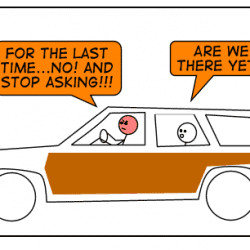What the heck is a carbon footprint?
I read a piece recently in The New Yorker about the latest environmental buzz phrase: your “carbon footprint.” Though I’ve had some vague idea before now what it was, I didn’t realize how complicated it really can be to figure out what my carbon footprint is, or how to do anything about it.
Though environmental sensitivity, in its many manifestations, has been an ethical issue for some time, churches are increasingly aware of the importance of conservation as a matter of stewardship. What would Jesus do? Probably recycle. So if we’re going to get honest about our lasting effect on this Big Blue Marble we call home, it seems like good discipleship to at least try and figure out thins carbon footprint thing a little bit better.
Now, I did know that things like changing my light bulbs to the more energy-efficient compact fluorescents and turning down our thermostat helped shrink my carbon footprint, as do walking and mass transit over automobiles. But there is a whole lot more to it than I ever considered.
Take, for instance, the food we eat. There’s a big “buy local” movement in the United states now, both based on the idea of supporting local economies and also to cut down on carbon emissions. Makes sense, right? After all, if you buy food produced nearby, it takes less fuel to transport it, so you’re doing right thing.
Not necessarily.
First, there’s the matter of packaging. Is the food you’re buying packaged in cardboard, plastic, or maybe both? Remember, all of that packaging takes resources and energy to create. We can assume that buying bulk produce is lower-impact for the environment, but what about the cartons it was shipped in? Are they reusable or recyclable, or do they just get tossed? And if the food you’re buying is refrigerated or frozen, well, that’s a whole new layer of energy consumption.
Thinking that going organic is the way to go? Maybe so, and maybe not. Though avoiding using pesticides and fertilizers is kinder to the earth, we know little to nothing about the equipment used to plant, maintain, harvest and clean our food. Could be solar-powered hippie tractors, or they could be diesel-cloud-spewing mammoths.
The whole “home grown is better” idea gets more complicated, even if we’re literally comparing apples to apples, so to speak. For example, a bottle of wine shipped by sea from the Bordeaux region of France to New York consumes less energy than it does to cart a bottle of Napa red by semi from California to the Big Apple. And who doesn’t like strawberries in December? If you are measuring your carbon footprint, consider that it may actually take more energy to grow food in a local greenhouse than to ship the same stuff from the southern hemisphere.
Top that all off with what happens to your food once you get it home. You may have bought the most earth-friendly potatoes on the planet, but once you take them home, boil them, squash them up with your electric mixer and heat them up again, you may be using more carbon-dependent energy per potato than they use to make French fries at a fast food restaurant.
It’s enough to make you want to throw in the dye-free, organically grown hemp towel.
It’s been said that awareness, at least, is the first step. It’s not like we can stop eating tomorrow, but at least knowing what impact the things we stuff our faces with does make us a little bit more sensitive to the long-term effects our lives have on the world. The good news is that, in most cases, the things that are better for our bodies also are better for the earth. With this as a starting point, I might not only cut down on our carbon footprint, but I might drop down a belt notch in the process.











